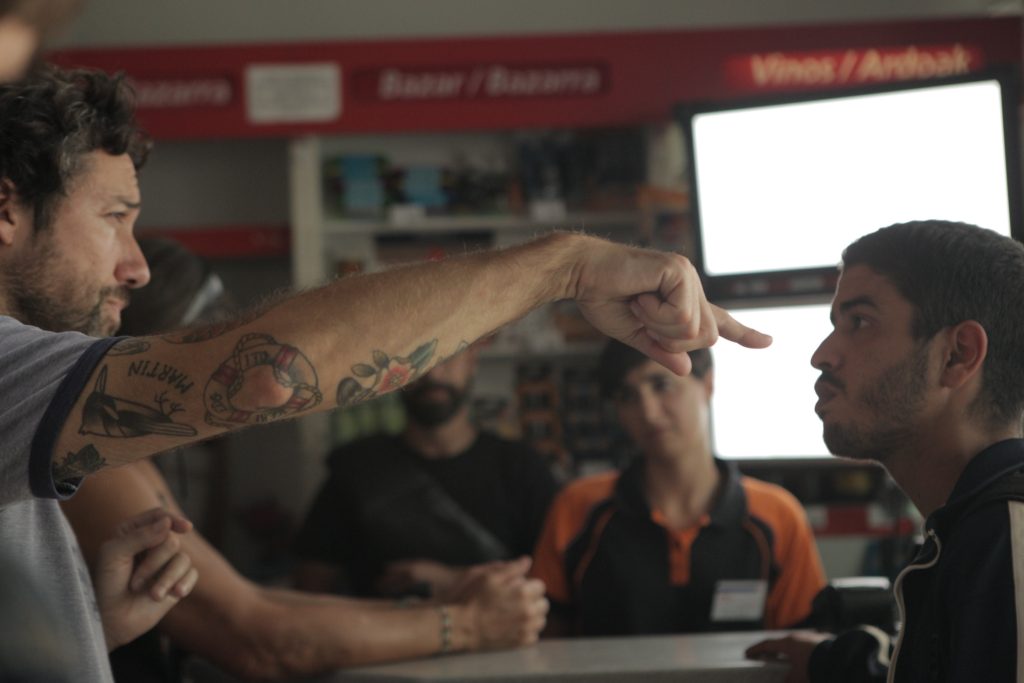With over four decades of writing as a film critic in the media of the Basque Country, I’ve been able to follow the evolution of Basque film closely, meaning that which has taken place from the Spanish political transition to the present day. In the beginning of the 1980s, it was a promising start with films subsidized by the Basque Government like “La fuga de Segovia” (1981), “La muerte de Mikel” (1983) or “Tasio” (1984). However, the filmmakers of that first generation ended up being forced to emigrate professionally, and thus Imanol Uribe, Montxo Armendariz or Pedro Olea had to follow in the footsteps of their predecessors Elías Querejeta, Antxon Eceiza or Antxon Mercero. The same thing happened with the next generation of Álex de la Iglesia, Juanma Bajo Ulloa, Enrique Urbizu, Daniel Calparsoro and Julio Medem.

The problem with the continuous exodus of talent (and we could add to the list prestigious international names like Xabier Agirresarobe) was the lack of capability of the local film industry to ensure the continuity of production and steady work for technical and artistic teams. It was a deficiency that hasn’t been resolved internally because, in fact, this industrial development didn’t actually unfold, instead, it evolved thanks to the technological evolution of audiovisual media. Nowadays in the digital world, a large production studio is no longer necessary and with this expanded independence, the visual quality allows greater competitiveness globally without sacrificing cultural identity.
The film that best demonstrates the leap made possible by the new technologies at the turn of the millennium was “La pelota vasca: la mano contra la piedra” (2003), and at the same time bringing out the idea that dialogue could be a means for the resolution of the Basque political conflict. In a sense, we could say that Julio Medem bridged a gap with a new force of young filmmakers who were ready to take note of the creative possibilities they saw on the horizon. Times had changed and it was finally even possible to laugh at ourselves and take a comical approach. This is how “Aupa Etxebeste!” (2005) arose, created by Asier Altuna and Telmo Esnal which was going to regain the connection with the public through popular and situational humor. Its continuation, “Agur Etxebeste!”, premiered this year in 2019 and wraps up a cycle of fifteen very productive years.

It’s quite revealing that the new filmmakers have made a conscious effort to move on from the filmmaking of previous decades, going back in time to the foundational work of Basque film, “Ama Lur” (1968), in an effort to recover the essence of the Oteizan view (by the sculptor Jorge Oteiza) as its artistic engine and source of identity. This line of work is reinforced with this chronological list of titles: “Lucio” (2007), “Ander” (2009), “80 egunean” (2010), “Bi anai” (2011), “Urte berri on, amona” (2011), “Asier eta biok” (2013), “Loreak” (2014), “Amama” (2015), “Errementari” (2017), “Handia” (2017), “Oreina” (2018) and “Dantza” (2018).
The awards and recognition for all these films has helped, along with the support of initiatives such as the Zinemira category of the San Sebastian International Film Festival and the proliferation of small producers that we can list here who follow the example of the successful Txintxua Films, among many others: Arena Comunicación, Lamia, Blogmedia, Barton Films, Talka, Laniakea, Taui Media, Doxa, Demeter, Kanaki, Kubelik, Euskadi Movie, Amania, Mr. & Mrs. Producciones, or Arquetipo Comunicación. The same can be said of animation studios, which, since the pioneer Juanba Berasategi released the first feature film ‘Kalabaza Tripontzia’ (1985) have been emerging, for example: Irusoin, Dibulitoon, Pausoka, Baleuko, Kaia, Neco, Lotura or Silver Space, all well known throughout Europe. Thanks to this and co-production, Raúl de la Fuente has brought his dream to life with “Another Day of life” (2018), the maximum milestone achieved by our animators.

The rapid growth of the Basque film industry in recent years brings with it the increase in foreign films shot on Basque soil which has triggered the creation of film studios. In Navarre, two different studios are in progress: Melitón in Lekaroz and Navarra Films Studios in Las Bardenas. In Gipuzkoa, Zinealdea, already operating in Oiartzun, has felt an upsurge because of the existing demand.


Be the first to comment on "The Rise of Basque Film"